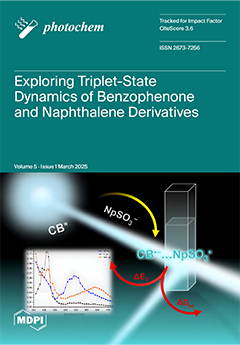In this work, we report the fabrication of CuI@g-C
3N
4/MoS
2 thin films by the thermal evaporation of Cu films and their conversion into hybrid films by a simple wet chemical method. Compared to pure CuI, CuI@g-C
3N
4
[...] Read more.
In this work, we report the fabrication of CuI@g-C
3N
4/MoS
2 thin films by the thermal evaporation of Cu films and their conversion into hybrid films by a simple wet chemical method. Compared to pure CuI, CuI@g-C
3N
4/MoS
2 shows enhanced absorption near the UV region, which improves its DC photoconductivity. The conductivity of the films is enhanced by the addition of g-C
3N
4/MoS
2, which is distributed on the surface of the CuI film. The band gap of the films red-shifts upon adding g-C
3N
4/MoS
2. We evaluate this material’s potential application as a photodetector and in photocatalysis by evaluating its photoelectrochemical properties using impedance spectroscopy measurements, cyclic voltammetry, and DC photoresponse measurements. We find that upon the addition of g-C
3N
4/MoS
2, the conductivity of the films is increased, as evidenced by the time-dependent photo amperometry measurements. Also, a higher DC photoresponse is observed upon increasing the concentration of MoS
2. This work marks the first time a hybrid CuI@g-C
3N
4/MoS
2 film and its photoelectrochemical characteristics have ever been reported.
Full article





